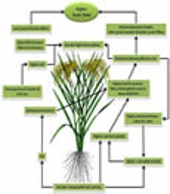

Trace Oswald wrote:
J W Richardson wrote:Thanks for this thread. I went with three breeds in my flock with part of the idea to get a lot of genetic diversity in order to avoid inbreeding problems. Not sure if I am thinking clearly on this though. I have three roosters from these crosses for a flock of 25-35, and figured some linebreeding would be acceptable in this kind of situation. I don’t cull the hens, no congenital problems seen, a lot of diversity in type among them, but select the roosters for type. Three generations of roosters at this point, with two having the landrace features I am looking for and one being a pure original breed type. What do you think, can I keep my beloved senior rooster around in this type of situation?
I don't think there is any question that you will have inbreeding problems at some point, the only question is when. I bred dogs for more than 30 years and I really dislike the term "linebreeding" as well. I would prefer to call it inbreeding, as it is. I understand the process, I understand the reasoning, I understand the results. I don't think it is worth it overall. I think the only reason people call it linebreeding is because it doesn't sounds as bad as inbreeding. A rose by any other name...





Jondo Almondo wrote:@JW - With absorbing ammonia emissions from manure, biochar will work ok, but would work better if the whole mix was submerged in water. Can I suggest an extremely thick layer of hay? Many composters use a thick (sometimes compacted and moistened) layer of mulch to 'cap off' their pile and reduce emissions. A tarp over the lot can also contain and condense some of the gasses.
Biochars ability to absorb gasses is related to the duration of high-temperature ranges in it's production. A good biochar for the soil is less ideal for absorbing gasses, activated charcoal (made at higher temps) is great at absorption, not so great for the soil.
Also, if your worried about emissions - burning wet stuff slowly, smoldering matter in a pit is about as emissions intensive as it can get. It's also quite bad for your health. It's potentially worse than a traditional burn pile due to increased dioxin and PM outputs.
That was a very decent article in the NYT. Great to read that individual states are trying to roll out soil education, carbon credits and research in this field. The soil-carbon plan for France is especially ambitious given its national scale.
